New Students fall 2018, part 2
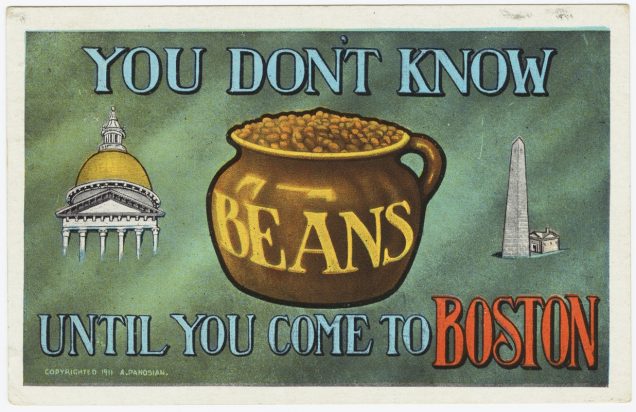
We look forward to welcoming new students in the MLA in Gastronomy and Food Studies Graduate Certificate programs this fall. Get to know a few of them here.
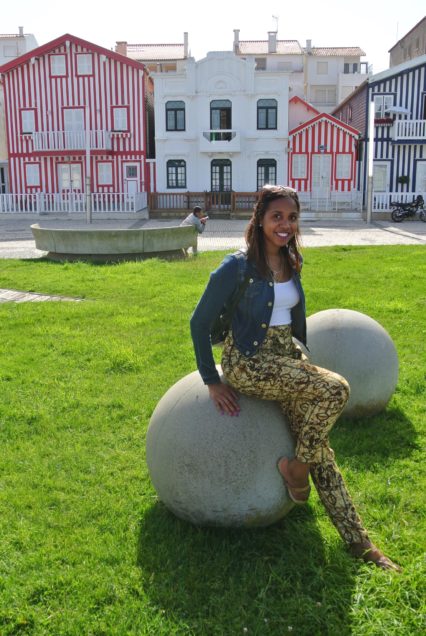 Ashley Belmer is a native Bostonian who grew up in the lovely town of Roslindale. For her undergraduate degree, she decided to relocate to Atlanta, GA where she earned a B.A. in Comparative Literature and African Studies in 2013. As a child, she would always nag her dad to help him prepare his epic Sunday dinner that could literally feed an army. Over time, her passion for food began to grow from helping to prepare dinner, school lunches, baking masterpieces, starting a food blog, and now enrolling in BU's Gastronomy program.
Ashley Belmer is a native Bostonian who grew up in the lovely town of Roslindale. For her undergraduate degree, she decided to relocate to Atlanta, GA where she earned a B.A. in Comparative Literature and African Studies in 2013. As a child, she would always nag her dad to help him prepare his epic Sunday dinner that could literally feed an army. Over time, her passion for food began to grow from helping to prepare dinner, school lunches, baking masterpieces, starting a food blog, and now enrolling in BU's Gastronomy program.
Currently Ashley works as a Digital Marketer in higher education. This allows her creativity to flow and explore the ever evolving digital space. Through this gastronomy program, she hopes to began her journey in becoming a food authority.
 Lauren Kirincic was born and raised on Long Island, New York. In May 2017, Lauren received a BA in Sociology from Gettysburg College. After graduation, she headed home and began her job search. She worked in a few different industries but could not find anything that she was passionate about. In February 2018, she started working at Further Food, a supplement company, as their social media associate. This job made her realize that it was food that she LOVED! Upon this realization, she wanted to learn more about the food world! She has a passion for food, travel and writing. She has always loved travel and after studying abroad in Florence she was even more eager to eat her way across the globe! With a Master’s in Gastronomy, she hopes to be able to create a career that can turn her dream into a reality!
Lauren Kirincic was born and raised on Long Island, New York. In May 2017, Lauren received a BA in Sociology from Gettysburg College. After graduation, she headed home and began her job search. She worked in a few different industries but could not find anything that she was passionate about. In February 2018, she started working at Further Food, a supplement company, as their social media associate. This job made her realize that it was food that she LOVED! Upon this realization, she wanted to learn more about the food world! She has a passion for food, travel and writing. She has always loved travel and after studying abroad in Florence she was even more eager to eat her way across the globe! With a Master’s in Gastronomy, she hopes to be able to create a career that can turn her dream into a reality!
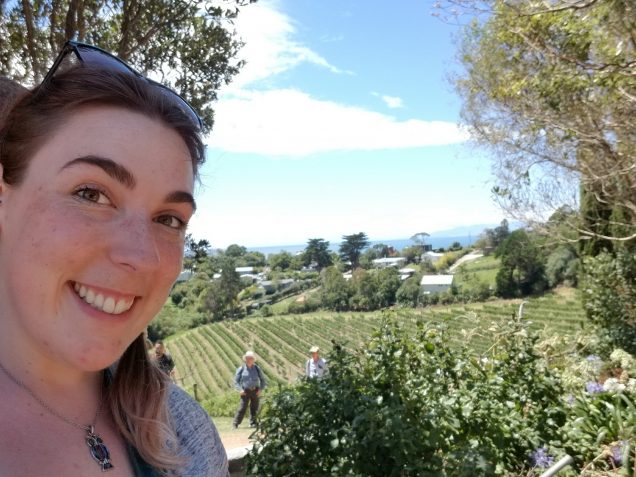
Sarah Hartwig is a transplant to Boston from Kansas City, where she was born and raised. Before joining the Gastronomy program, she was an Americorps VISTA at the Wyandotte County Health Department for almost two years, where she worked on food access and other food system issues. She worked on all kinds of projects from coordinating activities for a summer meal program food truck, to working with the Board of Commissioners and Planning Department to update a mobile vending ordinance, to organizing a locally grown dinner for local policymakers and community stakeholders.
From a young age, Sarah has known the importance of food for both person and culture. She is a granddaughter of farmers on one side and of doctors on the other. She spent many summers in Central Kansas surrounded by fields full of corn, soybeans, and wheat only to come home to Kansas City to see hungry people who didn’t know what a tomato looked like.
She graduated Gonzaga University in 2015 with BAs in Sociology and Classical Civilizations as well as a passion for social justice. She is interested in both food justice and sovereignty work, and is excited to learn more about many of the issues currently affecting the food system.
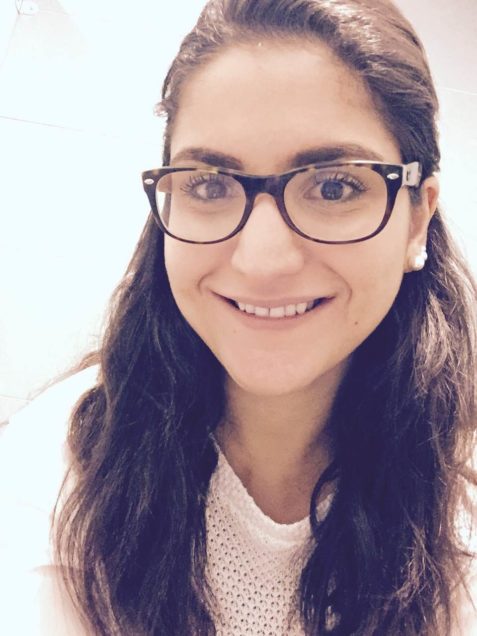 Carole Sioufi was born and raised in Beirut, Lebanon. After receiving a BA in Economics from the American University of Beirut, she completed a master’s degree in Management & Strategy at the London School of Economics. Carole then joined the family business - a group of commercial and industrial companies that operate in the chemical industry of the Middle East - and successfully expanded its activities to North Africa and the Gulf countries. While working on her last project in Dubai, she realized that it was time to fulfill her lifelong dream of becoming a food entrepreneur. Her first stepping stone is the MLA in Gastronomy through which she aims to learn the theory of food, hone her culinary skills, and grasp the role that food plays in our daily lives.
Carole Sioufi was born and raised in Beirut, Lebanon. After receiving a BA in Economics from the American University of Beirut, she completed a master’s degree in Management & Strategy at the London School of Economics. Carole then joined the family business - a group of commercial and industrial companies that operate in the chemical industry of the Middle East - and successfully expanded its activities to North Africa and the Gulf countries. While working on her last project in Dubai, she realized that it was time to fulfill her lifelong dream of becoming a food entrepreneur. Her first stepping stone is the MLA in Gastronomy through which she aims to learn the theory of food, hone her culinary skills, and grasp the role that food plays in our daily lives.
Carole is a passionate cook. Her love for cooking began at the age of thirteen when she was struggling with obesity. Eager to transform her body, she taught herself to cook satiating and delectable meals with a Middle Eastern twist. Not only did she lose a third of her weight, but she also discovered an aspiration to help others eat healthily. Her goal is to find a viable and scalable way to reduce obesity, namely childhood obesity.
Welcome new students for fall 2018
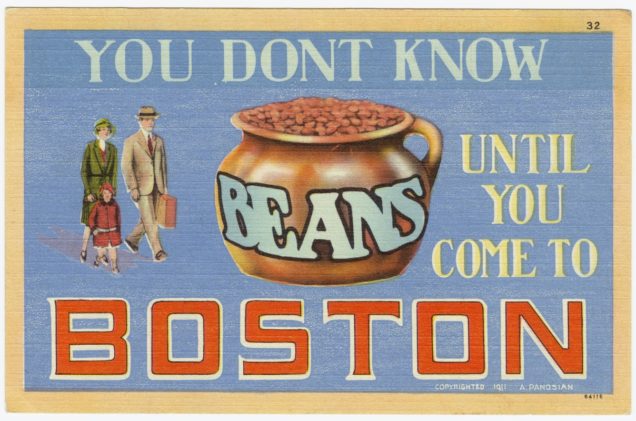
We look forward to welcoming new students in the MLA in Gastronomy and Food Studies Graduate Certificate programs this fall. Get to know a few of them here.
Jennifer Nadeau grew up in Central Massachusetts before moving to the western part of the state for college. 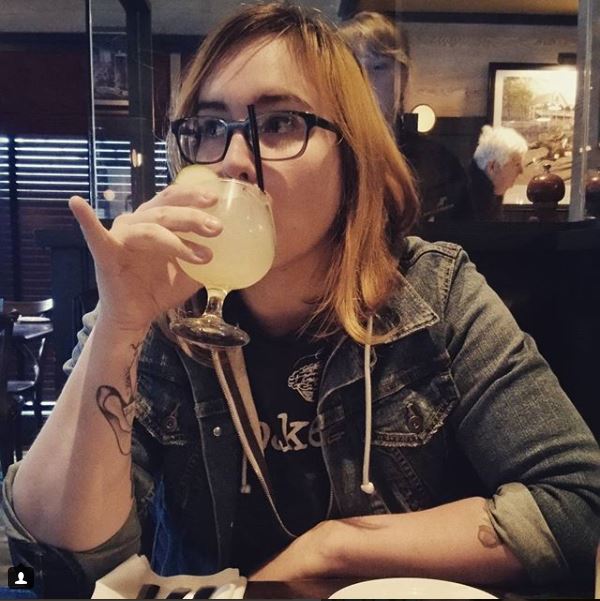 She earned a BA in Anthropology with a focus on biological anthropology and food from the University of Massachusetts Amherst in 2014. As a child, Jennifer frequently spent time with people from the community that had unique food habits and paths and in turn- taught her to love and crave as many novel foods as she could possibly consume.
She earned a BA in Anthropology with a focus on biological anthropology and food from the University of Massachusetts Amherst in 2014. As a child, Jennifer frequently spent time with people from the community that had unique food habits and paths and in turn- taught her to love and crave as many novel foods as she could possibly consume.
Jennifer’s interests have taken her through Dixie and Gulf states as she studied how country music, delta blues, and Southern foodways were and still are entwined. She is particularly interested in specific regional variations of foods such as tamales, pizza, and barbeque – and she maximizes her exposure by going broke traveling around the country and using most of her paychecks on food experiments in her home. Her next mission is to examine the shift in policy as recreational marijuana is legalized and monetized. Navigating the underground edible marijuana sessions in the western part of the state, Jennifer is hoping to shed insight on the policy, growth, improvement, and innovation surrounding the types of foods that producers infuse with marijuana.
Carol Waldo came to Boston by way of Chicago, Kansas City, and California. She obtained a BA in Chemistry at 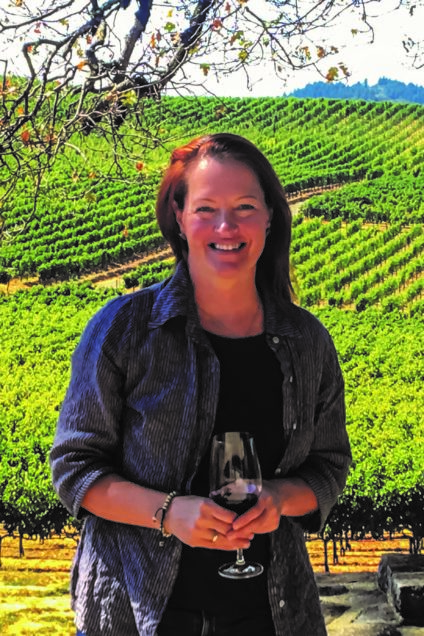 North Central College. Her post college career began in the microbiology and analytical chemistry labs in the food and pharmaceutical industries. Currently, she is responsible for communications with regulatory health authorities and supporting development programs with the aim of bringing new drugs to patients. Throughout her professional career, she has spent her personal time exploring food, wine, and travel. She has taken numerous cooking classes at the Institute for Culinary Education and boot camps at the Culinary Institute of America. She spent a week in a private home near Tlaxcala, Mexico, immersed in Mexican cuisine and culture. She has traveled extensively and likes to incorporate regional cultural and cooking experiences with hiking and biking. She has taken wine studies classes at BU and has visited wine regions around the world.
North Central College. Her post college career began in the microbiology and analytical chemistry labs in the food and pharmaceutical industries. Currently, she is responsible for communications with regulatory health authorities and supporting development programs with the aim of bringing new drugs to patients. Throughout her professional career, she has spent her personal time exploring food, wine, and travel. She has taken numerous cooking classes at the Institute for Culinary Education and boot camps at the Culinary Institute of America. She spent a week in a private home near Tlaxcala, Mexico, immersed in Mexican cuisine and culture. She has traveled extensively and likes to incorporate regional cultural and cooking experiences with hiking and biking. She has taken wine studies classes at BU and has visited wine regions around the world.
For Carol, the process of curiosity leading to discovery and learning is exhilarating. The cultural context of the ingredients is as important to her as the technique involved in making the dishes. Purposefully combining ingredients for a balanced, flavorful meal paired with wine is deeply satisfying. Traveling and cooking regional dishes with local chefs, purchasing ingredients in local markets is insightful, humbling, and energizing. She hopes to deepen these insights with additional study and travel.
Carol has realized what it feels like to follow her curiosity and passion. She believes that experiences and knowledge gained through the Gastronomy program will help shape her path forward.
 Hannah Spiegelman grew up in Santa Fe, New Mexico in a very food-centric household, where cooking was a fun and exciting activity. While in high school, Hannah started baking as a way to release creative energy. She loved experimenting with out-there flavor combinations. But told by her Grandfather that studying food wasn’t a real education, Hannah followed his path and majored in history at Goucher College in Baltimore, Maryland. Still, she always made sure incorporated either food or art into her class projects.
Hannah Spiegelman grew up in Santa Fe, New Mexico in a very food-centric household, where cooking was a fun and exciting activity. While in high school, Hannah started baking as a way to release creative energy. She loved experimenting with out-there flavor combinations. But told by her Grandfather that studying food wasn’t a real education, Hannah followed his path and majored in history at Goucher College in Baltimore, Maryland. Still, she always made sure incorporated either food or art into her class projects.
After working as a research associate at Goucher’s Archives and getting a second job at an ice cream shop, Hannah realized that she could combine both of her passions. Born in February 2107, A Sweet History is an historical-ice cream concept that creates flavors inspired by figures, events, art, and places in history in order to get people excited about things they may never had dared to care about it. Over the last year and a half, A Sweet History has done pop-up events, workshops at museums, and commissioned pints. Hannah is very much looking forward to delving back into school, learning about all aspects in the food world, especially the history and culture of food, and continuing to cultivate her passions.
There Are Mangos Everywhere: a brief Cuban travel story of cockroaches, coconuts and Cuba Libres
Gastronomy student Mollie Braen recently traveled to Cuba and contributed this post.
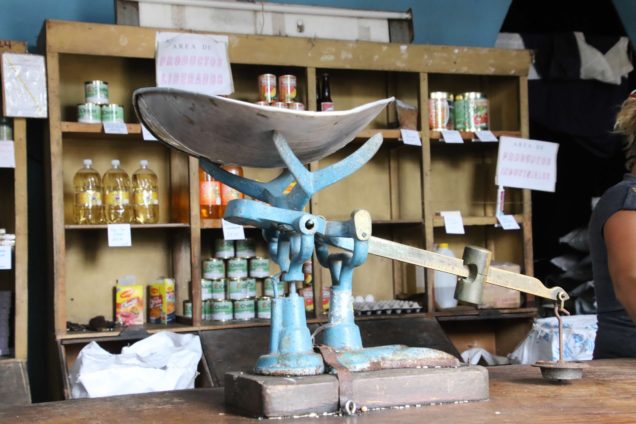
We were strolling down the busy, narrow streets of Havana, nine days into our Cuban adventure, and in all honesty, we were tired. We had experienced record-breaking rain, with cars floating down the streets of Trindad. We saw locals standing in knee deep water in their homes, cows and horses stranded on the side of the road. We had locked ourselves out of our bathroom in the hotel in Remedios because two giant cockroaches had made a home in our bathtub and we had experienced what a ration store was like for local Cubans, with a mystery meat sitting out on the hot counter and a little kitten sick with some kind of infections trying to stay cool among the coffee bean sacks. As we realized that not only were we very lost in a city we did not know, we were hungry and hot beyond anything we had ever felt before.
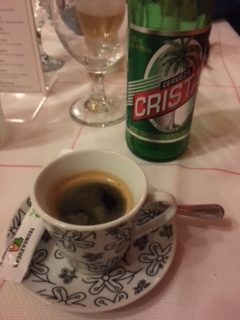 Cuba is an interesting place. This is how I start every conversation when someone asks, “So, how was Cuba?” I say it was everything and nothing like I imagined. It is beautiful, hot, exhausting, exciting, heart-breaking but most of all, heart-filling. The people are kind and friendly. They welcomed us into their homes and art studios, showing us their pride for their country but also their humanity, as they are people just like us.
Cuba is an interesting place. This is how I start every conversation when someone asks, “So, how was Cuba?” I say it was everything and nothing like I imagined. It is beautiful, hot, exhausting, exciting, heart-breaking but most of all, heart-filling. The people are kind and friendly. They welcomed us into their homes and art studios, showing us their pride for their country but also their humanity, as they are people just like us.
The food, in all honesty, was not very diverse or flavorful. This is mostly due to how tourism and the restaurant businesses work in Cuba today. We mostly ate at government run hotels or restaurants and when we ate at a local Paladar, a type of restaurant in a person’s home, it was always a similar meal. It started with a salad of cabbage, canned green beans and beets, the main dishes were often pork or chicken, sometimes shrimp, with rice and black beans, and a choice between Bucanero or Cristal, the two local government produced beers for a drink. Dessert is usually served and it is either flan or some kind of pudding, and occasionally ice cream (which is reserved for tourists, as most of Cuba’s dairy is imported from other countries). The drinks are always plentiful: Cuba Libre, which is coke and rum, Mojitos with Cuban rum, or sometimes just rum. These are delicious, especially after a heat and humidity so intense, I would have sworn my bones were sweating.
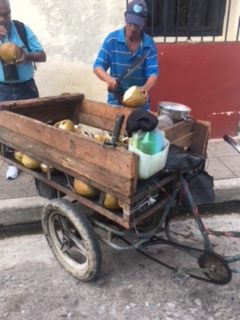 We sampled fresh coconut sold by a man with a machete and cart near a square in Camaguey, and while it was somewhat bitter and gummy it felt like a much-needed hydration snack. We watched as a man showed us how Cuban cigars are made, rolling it by hand and telling the infamous story of how the Cuban sandwich came to be, using a cigar press in Miami many years ago. We ate fresh mangos everywhere we went. The country is filled with trees and an abundance so large, they barely sell them anymore, as they lay upon the ground, juicy, drippy and delicious for anyone to pick up and bite right into (make sure to spit out the skin).
We sampled fresh coconut sold by a man with a machete and cart near a square in Camaguey, and while it was somewhat bitter and gummy it felt like a much-needed hydration snack. We watched as a man showed us how Cuban cigars are made, rolling it by hand and telling the infamous story of how the Cuban sandwich came to be, using a cigar press in Miami many years ago. We ate fresh mangos everywhere we went. The country is filled with trees and an abundance so large, they barely sell them anymore, as they lay upon the ground, juicy, drippy and delicious for anyone to pick up and bite right into (make sure to spit out the skin).
So, at that moment, on the busy Havana street, where we were lost and tired, and honestly, a bit homesick, a man on a bicycle walked it by. Hanging from the handlebar of his bike was a very large pig leg. As he walked by, the leg slightly grazed the ground and I could not help but just laugh at the sheer unordinary happenstance that we had just witnessed in front of us. This story is the best one I tell of our trip because it encompasses the resourcefulness of Cuba, the tough, the ingenious, the exciting, the different, and the difficult. Cuba was a place like nowhere else I have ever been and though the food was not what I expected, it was not always about what we ate but I will always remember what we saw and what we experienced within the food culture and foodways of this incredibly interesting country we were so lucky to visit.
Course Spotlight: Sociology of Taste
Are you still looking to add a fall 2018 class to your schedule? Connor Fitzmaurice will be teaching our Special Topics course, The Sociology of Taste (MET ML 610 D1) on Thursday evenings.
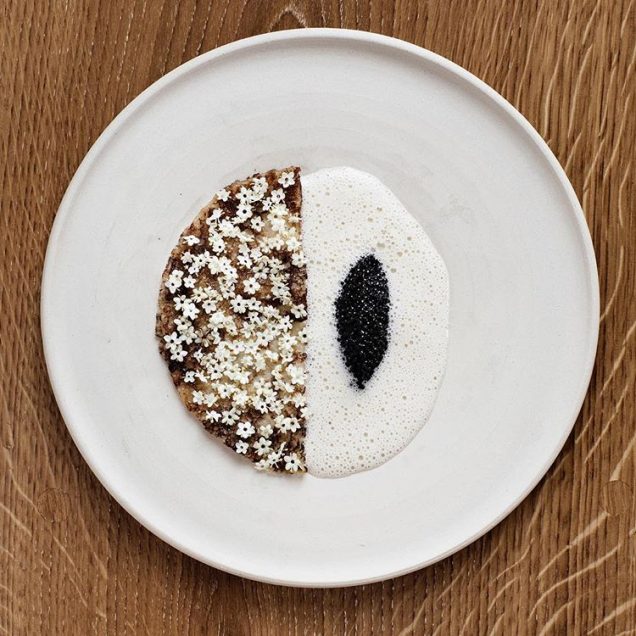
Taste has an undeniable personal immediacy: producing visceral feelings ranging from delight to disgust. As a result, in our everyday lives we tend to think about taste as purely a matter of individual preference. However, for sociologists, our tastes are not only socially meaningful, they are also socially determined, organized, and constructed. This course will introduce students to the variety of questions sociologists have asked about taste. What is a need? Where do preferences come from? What social functions might our tastes serve? Major theoretical perspectives for answering these questions will be considered, examining the influence of societal institutions, status seeking behaviors, internalized dispositions, and systems of meaning on not only what we enjoy--but what we find most revolting.
MET ML 610 D1, Special Topics in Gastronomy: Sociology of Taste, will meet on Thursday evenings from 6 to 8:45 PM, beginning on September 6. Registration information can be found here.
Course Spotlight: Anthropology of Food
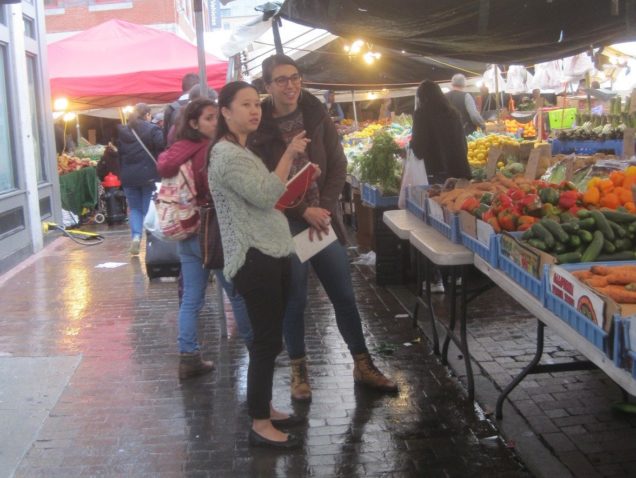
Dr. Karen Metheny, Senior Lecturer in Gastronomy, will teach Anthropology of Food (ML 641 C1) on Wednesdays during the Fall 2018 semester, and has prepared this course spotlight.
Been to Haymarket recently? It is Boston’s oldest food market and provides a wonderfully rich food experience. But Haymarket also lets us explore other topics. Why are certain foods thought to be good to eat and others are not? How are the preparation, display, and consumption of food invested with meaning? What can food tell us about human culture and social organization? Food offers us many opportunities to explore the ways in which humans go about their daily lives, from breaking bread at the family table to haggling over the price of meat at the market to worrying about having enough to eat. Food can also tell us about larger social organizations and global interconnections through products like Spam that are traded around the globe and the ways in which a fruit like the tomato transformed the culinary culture of European nations.
ML 641 serves as an introduction to the anthropological study of food, and to the study of food as a cultural system. We look at how food anthropology has developed as a subfield of cultural anthropology, including methodologies and theoretical frameworks. We also consider the work of ethnography—from the role the ethnographer plays in documenting the food practices of cultural groups, and the significance of those practices, but also the challenges ethnographers may encounter as they engage with foods and cultures that are unfamiliar to them. Finally, in this cross-cultural exploration of food and foodways, students explore the communicative and symbolic roles of food and drink in ritual, reciprocity and exchange, social display, and the construction of identity. We also look at the transformative role of food in the context of culture contact, diaspora, and (im)migration; the relationship between food and ideas of bodily health and body image; food and memory; and the globalization of food as it relates to politics, power, and identity.
This course offers students opportunities for hands-on, experiential learning, including exercises in ethnographic observation at Haymarket and Boston Public Market, food mapping exercises, and a final project in which students research and recreate a food dish as a lens through which to view a particular culture or foodway. Join us!
Anthropology of Food (ML 641 C1) will meet on Wednesdays, 6-8:45 pm, beginning on September 5. Registration information can be found here.
Tiny Coffees and Food Fieldwork in Argentina
By Giselle Kennedy Lord
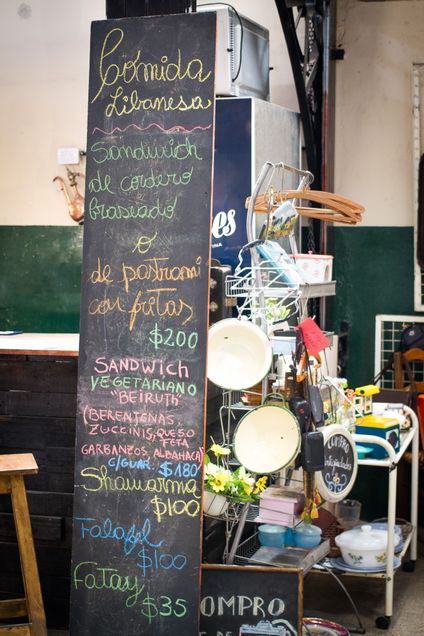 It took me nearly 40 hours and a brand-new laptop to get to Buenos Aires to start my field research. As is my technological luck, my 6-year-old laptop decided to adopt toddler-like tendencies in starting up and shutting down two days before my departure. Sometimes it started up and sometimes it didn’t - no logical explanation for either. It stopped starting up at all while I was on the first leg of my journey to Argentina, which is not a place where you can buy or repair technology in any sort of economical or reasonable way. But I had to get on that plane, and in the end, I boarded that plane carrying a brand-new laptop still wrapped and in its box from the Apple store in Manhattan where I purchased it on a credit card during my 15-hour layover.
It took me nearly 40 hours and a brand-new laptop to get to Buenos Aires to start my field research. As is my technological luck, my 6-year-old laptop decided to adopt toddler-like tendencies in starting up and shutting down two days before my departure. Sometimes it started up and sometimes it didn’t - no logical explanation for either. It stopped starting up at all while I was on the first leg of my journey to Argentina, which is not a place where you can buy or repair technology in any sort of economical or reasonable way. But I had to get on that plane, and in the end, I boarded that plane carrying a brand-new laptop still wrapped and in its box from the Apple store in Manhattan where I purchased it on a credit card during my 15-hour layover.
Before beginning this research, my advisor recommended that I formulate a very solid plan and then expect the unexpected, to let the research become what it was going to be and learn to essentially roll with the punches if things didn’t happen as planned. This proved to be very useful advice at many turns along the way. My mantra during my six weeks in Argentina is a phrase I learned the first time I went there twelve years ago: con la fuerza. (The literal translation of this is “with the force,” but it has absolutely nothing to do with Star Wars and its meaning lies as much in how you say it as in what is being said.)
I arrived in Buenos Aires after two nights of sleeping on planes. I spent most of my time there based in Palermo - a vibrant, progressive neighborhood and arguably the gastronomic center of the city. In the beginning, I spent a lot of time in hip cafes drinking tiny coffees and eating tiny croissants while reading research on the Lebanese diaspora in Latin America, particularly research related to food culture. But I had already been reading this research for a few months and was eager to make some real-life connections now that I was in Argentina. I was also pretty nervous about whether or not I would be successful making those connections. In terms of field research, this was definitely my first rodeo.
My thesis research centers around food in diaspora, specifically the food culture of Lebanese people and families living in Latin America. My goal is to examine and better understand the way in which these families and individuals use food as a way to connect to their roots and establish identity, or if they even do at all. There are huge populations of Middle Eastern people living in Latin America, particularly in Brazil and Argentina. It is my belief that the landscape and eating habits of these two far-flung regions of the world are quite complimentary if not also somewhat similar in certain places. But it’s people who perpetuate, leave behind, reinvent, and recontextualize food practices, traditions, and products, and it is my goal to discover how that pans out in Argentina and Latin America in the kitchens of the Lebanese. The grand majority of Lebanese immigrants in Argentina arrived in the late 1800s and early 1900s but, while research on these migrant populations is (thankfully) growing, there is a relative lack of research in the frame of food. But I have qualitative evidence that Lebanese food is a most tenacious tradition, even across continents and generations.
Since I arrived in Buenos Aires not knowing any Lebanese people there, I didn’t have ample time to pull off the 15-20 interviews at-home I had proposed. (I think I could get that and more now that I’ve cultivated those connections and relationships, an integral part of ethnographic research that must be done without a formula or rulebook). I did, however, return home about a month ago with five deep, dynamic interviews and case studies from the Lebanese people I got to know and spent time with in Buenos Aires. I have six weeks of notes and observations on Middle Eastern and Lebanese food in the capital city of the country occupied by the third largest population of Lebanese people outside of Lebanon. I have thirty surveys filled out by Lebanese people in different countries throughout Latin America. I have a stack of menus from Middle Eastern restaurants, many gigabytes of photos, and a whole new perspective on my own identity as the daughter of a Lebanese immigrant (raised on kibbi, much like all my participants). In the end, the research began to take shape and I learned to bend and expand my own approach and perspective along the way. I spent more time with the five people I did come to know and used much of my other time gathering data and making observations that I knew I’d only be able to glean while I was on the ground there.
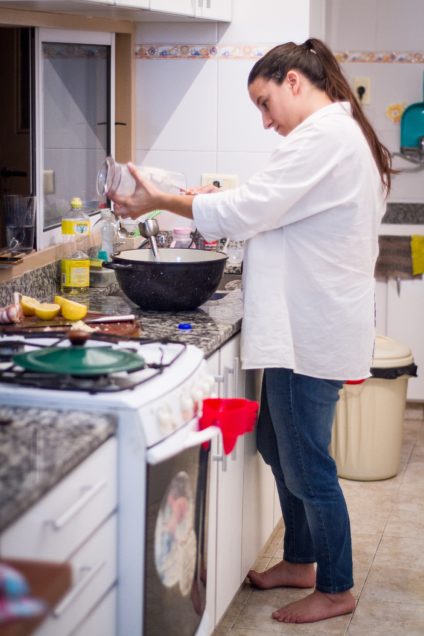 Contrary to what seems like a universal dependence on e-mail for making a connection, knocking on a door in Argentina will get you much farther if you’re looking to shake a hand and talk about hummus. I met Mari and Rosanna at La Iglesia de San Marón just in time to spend a day with them preparing food for a 200-person celebration in honor of the more-than-a-century-old church’s patron saint that coming Sunday. I gained invaluable perspective on how and why non-Lebanese Argentines learned to cook Lebanese food, the symbolism of group consumption, and notions of collective identity. That Sunday, while munching on the mini mana’eesh I’d spread za’atar on the day before, I met Aida, a spritely 86-year-old woman who would invite me to her home to eat lunch, prepare kibbi, and tell me her story. In Aida’s kitchen, I took careful note of the way her story tied to her food traditions and how her Lebanese and Argentine heritage come together at her table. I greeted Sergio Jalil, who I had met a few days earlier (by simply showing up at his office) and who is the founder and executive director of CELIBAL, a non-political organization whose mission it is to expose and represent an inclusive identity for Lebanese people in Latin America and to provide their community with a forum to talk about their unique identity. Sergio and his wife, Marianela, invited me to their home for a Lebanese dinner and a conversation about their families, their history together, and their favorite dishes. In their home, I came upon that tenacity of the tradition I mentioned earlier, confronted the results of class differences within the community, and caught a glimpse of the social manifestations of Lebanese identity-building in Argentina.
Contrary to what seems like a universal dependence on e-mail for making a connection, knocking on a door in Argentina will get you much farther if you’re looking to shake a hand and talk about hummus. I met Mari and Rosanna at La Iglesia de San Marón just in time to spend a day with them preparing food for a 200-person celebration in honor of the more-than-a-century-old church’s patron saint that coming Sunday. I gained invaluable perspective on how and why non-Lebanese Argentines learned to cook Lebanese food, the symbolism of group consumption, and notions of collective identity. That Sunday, while munching on the mini mana’eesh I’d spread za’atar on the day before, I met Aida, a spritely 86-year-old woman who would invite me to her home to eat lunch, prepare kibbi, and tell me her story. In Aida’s kitchen, I took careful note of the way her story tied to her food traditions and how her Lebanese and Argentine heritage come together at her table. I greeted Sergio Jalil, who I had met a few days earlier (by simply showing up at his office) and who is the founder and executive director of CELIBAL, a non-political organization whose mission it is to expose and represent an inclusive identity for Lebanese people in Latin America and to provide their community with a forum to talk about their unique identity. Sergio and his wife, Marianela, invited me to their home for a Lebanese dinner and a conversation about their families, their history together, and their favorite dishes. In their home, I came upon that tenacity of the tradition I mentioned earlier, confronted the results of class differences within the community, and caught a glimpse of the social manifestations of Lebanese identity-building in Argentina.
Though I hadn’t intended to look much at restaurants, at that point I could not deny the importance of exploring and understanding the restaurant culture of Lebanese and Middle Eastern food in Buenos Aires, if only to relate it to food practices at home. What I found was surprising to say the least – a plethora of restaurants identified as comida arabe with strikingly similar menus and only three restaurants that specifically identify as Lebanese. Analyzing the menus of these restaurants brings to light what foods have been deemed acceptable and appealing in the particular gastronomic and cultural landscape of Buenos Aires, the difference between what is cooked at home and what is cooked for public consumption, and the way specific foods and dishes have been recontextualized, hybridized, and changed. I spent plenty of time taking (sometimes edible) notes on other popular restaurants and cuisines in Buenos Aires, to build a framework for understanding Lebanese food from the broader perspective of international food in the metropolitan city. Not surprisingly, my observations of the restaurant scene there resulted in meaningful research and memorable meals. It also led me to Diego and Mariana.
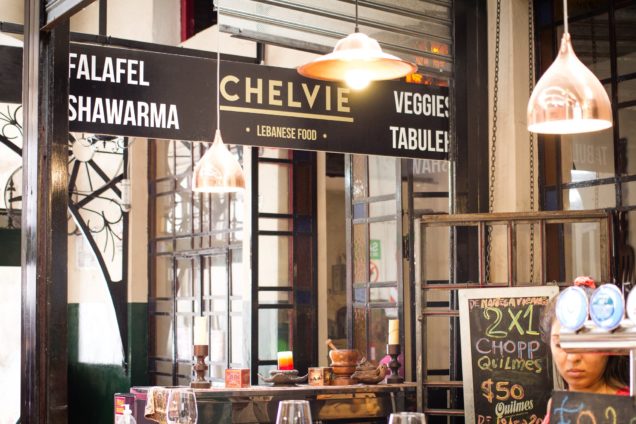 I went to the historic Mercado de San Telmo for a meal at a Lebanese restaurant/fancy food stall called Chelvie. Diego and his brother, Alejandro, opened Chelvie just last Fall and it fits perfectly in the market, which was once a place for antique and grocery shopping and, though the antique stalls and a few of the food vendors are holding strong, has become a veritable international food market, with food stalls and restaurants offering Swiss, French, Spanish, Mexican, Vietnamese, and, of course, Argentine fare. The Chelvie menu is unlike any other Middle Eastern menu I came across in Buenos Aires. Diego told me it was inspired by the typical dishes of an assortment of different members of his family. Diego kept returning to the idea that they’d opened the restaurant ‘for his family,’ something that came up often in talking to my participants about their food. Homage was emerging as a common theme and was a motivation for business and sentiment that Mariana also described while we ate hummus in her backyard.
I went to the historic Mercado de San Telmo for a meal at a Lebanese restaurant/fancy food stall called Chelvie. Diego and his brother, Alejandro, opened Chelvie just last Fall and it fits perfectly in the market, which was once a place for antique and grocery shopping and, though the antique stalls and a few of the food vendors are holding strong, has become a veritable international food market, with food stalls and restaurants offering Swiss, French, Spanish, Mexican, Vietnamese, and, of course, Argentine fare. The Chelvie menu is unlike any other Middle Eastern menu I came across in Buenos Aires. Diego told me it was inspired by the typical dishes of an assortment of different members of his family. Diego kept returning to the idea that they’d opened the restaurant ‘for his family,’ something that came up often in talking to my participants about their food. Homage was emerging as a common theme and was a motivation for business and sentiment that Mariana also described while we ate hummus in her backyard.
Mariana’s grandfather is Lebanese and she grew up well steeped in Lebanese food culture – their own unique brand of culinary knowledge and practice passed down from his mother to his wife and eventually to Mariana. Mariana, called Berta by close friends, is the youngest of my participants and recently started a business of making, selling, and delivering her well-tested and totally delicious hummus to people in and around Buenos Aires. Hummus delivery. I know, I want that in my town too. When I asked Mariana why, her rather poetic answer was all about family, just like Diego. (She had also been inspired by the popular, overly varied, oddly flavored, packaged hummus she’d discovered during a trip to New York. But she mostly holds true to her fantastic recipe for classic hummus of which her grandfather would be proud.) In Diego and Mariana, I found the crossroads between home and entrepreneurship, heart and duty, memory and making a living. I also came to realize that gender concepts were not shaking out the way I’d expected but the emotions and memories my participants attached to food were pretty darn consistent.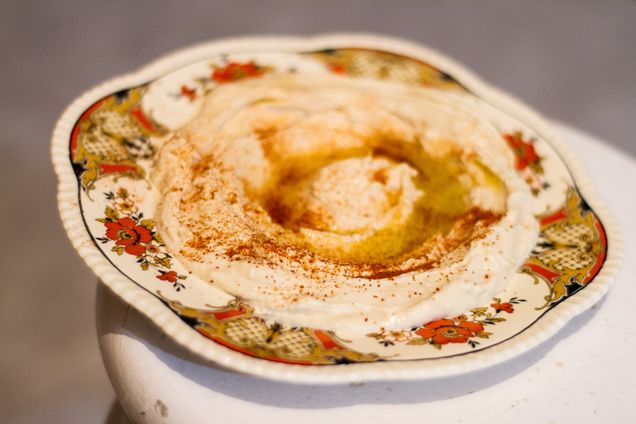
Sergio helped me get an online survey out to the CELIBAL community and I’ve got about thirty completed surveys that I can’t wait to analyze. I can’t wait to discover the nuances, differences, commonalities, and surprises that I’m sure lie within. I’d love to continue getting responses to that survey, I’d love to keep interviewing and cooking with people, but alas I am switching into writing mode. My first conclusion is that I am only scratching the surface on this topic.
My field research in Argentina was an invigorating, challenging, surprising, and fulfilling experience. I learned so much about research, about people, about myself, and about empandas arabes. Overall, I’d say I did what I went there to do. I got some very juicy material and enough of it to write a great paper, if I play my cards right (i.e. staying in this seat and typing on beautiful summer days). But now the new ‘real work’ begins. I’ve got to get all this data on the same wavelength, establish my themes, provide my evidence, make some qualitative conclusions, and tell these stories. There are moments when it seems impossible that all these notes in all these notebooks and word documents and margins of research papers will come together to form a righteous examination of this topic that I’ve spent so much time thinking about. And there are moments, as I begin to work through and transcribe and translate and analyze all those notes, that it becomes very clear that it would be impossible not to see the feast of a story all these little pieces will make when they’re put together. Con la fuerza.
Announcing the Fall 2018 Pépin Lecture Series in Food Studies & Gastronomy
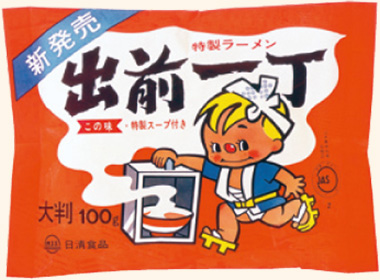 Démaé to Delivery: The History of Take-out Food in Japan, with Elizabeth Andoh
Démaé to Delivery: The History of Take-out Food in Japan, with Elizabeth Andoh
Tuesday, September 25, at 6 PM, Location TBA*
Whether it’s a simple bowl of soba noodles, or an elaborate full-course banquet, food delivery has been booming business in Japan for centuries. Come explore the history of démaé, Japan’s take-out catering, with cookbook author, culinary arts instructor and longtime Japan resident, Elizabeth Andoh. A graduate of the Yanagihara School of Classical Japanese Cuisine, Andoh has written three books on Japanese cooking: An American Taste of Japan, At Home with Japanese Cooking, and the IACP-award winning An Ocean of Flavor. She has been a James Beard Award Nominee for International Cooking.
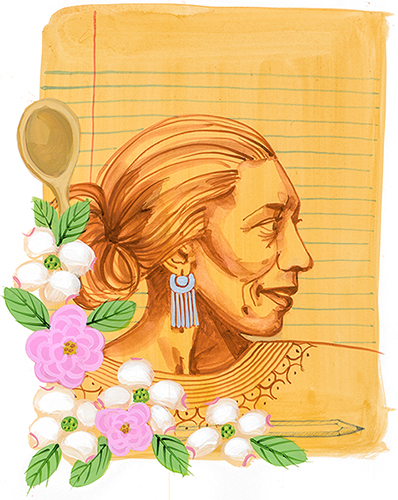 Edna Lewis: At the Table with an American Original, with Sara B. Franklin
Edna Lewis: At the Table with an American Original, with Sara B. Franklin
Tuesday, October 2 at 6 PM, location TBA*
Edna Lewis (1916-2006) wrote some of America's most resonant, lyrical, and significant cookbooks, including the now classic The Taste of Country Cooking. Lewis cooked and wrote as a means to explore her memories of childhood on a farm in Freetown, Virginia, a community first founded by black families freed from slavery. Her reputation as a trailblazer in the revival of regional cooking and as a progenitor of the farm-to-table movement continues to grow. In this first-ever critical appreciation of Lewis's work, food-world stars gather to reveal their own encounters with Edna Lewis. Sara Franklin, the book’s editor, discusses Lewis’s impact and how she brought together so many different perspectives on Lewis’ life and work.
Sara B. Franklin is a writer and food studies scholar teaching at New York University's Gallatin School of Individualized Study. She has a PhD in Food Studies from NYU.
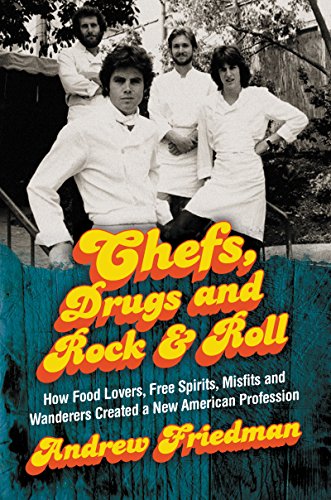 Chefs, Drugs and Rock ’n’ Roll: How Food Lovers, Free Spirits, Misfits and Wanderers Created a New American Profession, with author Andrew Friedman, and Chef Jim Dodge
Chefs, Drugs and Rock ’n’ Roll: How Food Lovers, Free Spirits, Misfits and Wanderers Created a New American Profession, with author Andrew Friedman, and Chef Jim Dodge
Thursday, October 25 at 6 PM, Fuller Building, room 117, 808 Commonwealth Avenue
Chefs, Drugs and Rock & Roll transports readers back in time to witness the remarkable evolution of the American restaurant chef in the 1970s and '80s. Author Andrew Friedman has chronicled the life and work of some of our best American chefs. He is the author of Knives at Dawn: America's Quest for Culinary Glory at the Bocuse d'Or, the World's Most Prestigious Cooking Competition and coeditor of the internationally popular anthology Don't Try This at Home. Among the chefs profiled in this work is Jim Dodge, director of specialty culinary programs for Bon Appétit Management Company, the jury chair for the first-ever Julia Child Award, and member of the advisory council of the Julia Child Foundation.
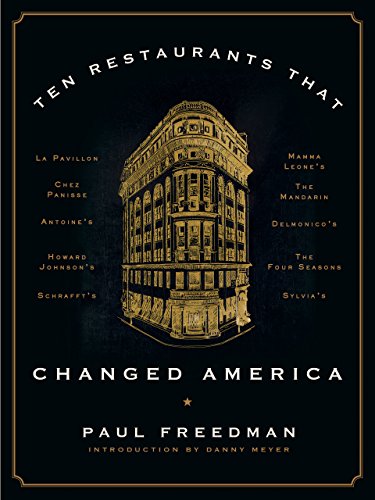 Ten Restaurants that Changed America, with Paul Freedman
Ten Restaurants that Changed America, with Paul Freedman
Thursday, November 29 at 6 PM, location TBA*
In Ten Restaurants that Changed America Paul Freedman revisits the most important dining places of the American past to explore what impact their menus and style have had on American food. From Howard Johnson’s to the Four Seasons, Freedman reminds us that when we dine out we participate in a broad national culture of expectations and behaviors. The book revives our memories of long ago dinners and gives us a new way to think about past meals. Writing in the New York Times, Tejal Rao noted that “Mr. Freedman marshals deep research to map the changes each restaurant made to American culture.” Ten Restaurants that Changed America has recently been released in paperback.
Paul Freedman is the Chester D. Tripp Professor of History at Yale University. Professor Freedman a specialist in medieval social history, the history of Catalonia, comparative studies of the peasantry, trade in luxury products, and the history of cuisine.
*Please refer to the Boston University Programs in Food and Wine website for updated locations in early September.
The Pépin Lecture Series in Food Studies & Gastronomy are free and open to the public, but registration is requested.
Food Mapping in the SOWA Market
Students in Dr. Karen Metheny’s Summer Term course, Anthropology of Food (MET ML 641) are contributing guest posts this month. Today’s post is from Becca Berland.
Food mapping is not something that your typical graduate student does on a daily basis. I’ll admit that I have never even heard of the concept before taking Dr. Karen Metheny’s Anthropology of Food class this summer. But as I’ve learned more about various ethnographic methods of study, I do think that food mapping has the ability to bring something different to the table.
For my food mapping project, I decided to observe and map out a corner of the SOWA Farmer’s Market in the South End of Boston. I’ve been helping man the Plant-Based Provisions (PBP) table this summer, so I used this opportunity to track the footpaths of three different groups of people who visited our stall. I chose to divide the customers I observed the following groups: those who expressed their dietary restrictions, those who had no dietary restrictions (or didn’t express them), and those who stopped at the table but didn’t purchase anything.
Since PBP focuses on vegan, dairy-free, and allergen-free sweet treats, many customers choose to tell us about their dietary restrictions when making friendly conversation. Most are either vegan, lactose intolerant, gluten intolerant, or attempting the Whole 30 diet. We also get customers who are looking for a healthier, naturally sweetened option for themselves or their children. Potential customers without dietary restrictions often get excited when they see we are selling puddings and popsicles, but they are turned off by the fact that our treats are vegan. This commonly leads to an unfinished sale. I suspect this is because the word “vegan” has a negative connotation to it when someone isn’t following a vegan diet. I know that I, too, would rather purchase a regular popsicle or pudding than a vegan one because I have a negative view of treats that are simply labeled “vegan.” Vegan means no milk or eggs, which means I’m usually not interested. There is a deeper meaning here to the label “vegan,” and I’d be interested to explore how this turns regular eaters off in future research.
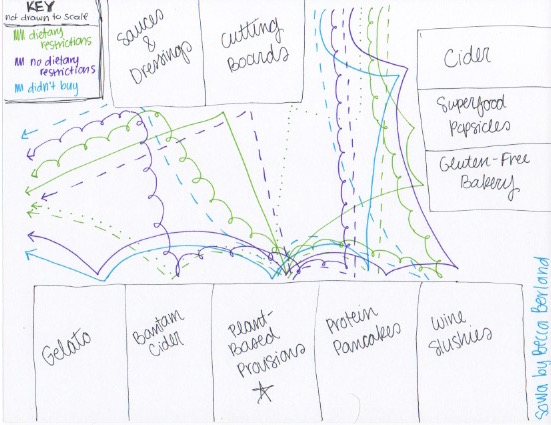 My map of our corner of SOWA, which is not drawn to scale, shows all of the vendors who were set up near us on this Sunday. I struggled to find a way to represent the different segments of customers but decided on using a different color for each one. I used different types of lines to represent each person’s path in order to follow their steps so that I could draw conclusions on my observations. While it might look a bit messy, I tried my hardest to make it so that each footpath could be followed easily with your eyes or finger. This was not something I had considered before this project, but mapping overlapping footpaths so that they are all still visible is not an easy task. In the future, I would try this map again with overlapping layers so that each footpath would be visible on its own or together with the other paths.
My map of our corner of SOWA, which is not drawn to scale, shows all of the vendors who were set up near us on this Sunday. I struggled to find a way to represent the different segments of customers but decided on using a different color for each one. I used different types of lines to represent each person’s path in order to follow their steps so that I could draw conclusions on my observations. While it might look a bit messy, I tried my hardest to make it so that each footpath could be followed easily with your eyes or finger. This was not something I had considered before this project, but mapping overlapping footpaths so that they are all still visible is not an easy task. In the future, I would try this map again with overlapping layers so that each footpath would be visible on its own or together with the other paths.
This project took mere ethnographic observations and extended them to create a mapping of a food-centric space. Mapping out our section of SOWA allowed me to take another look at the assumptions I had made about certain customers and their patterns. It reiterated to me that food can create cultural and social identities, as well as unwritten rules and segmented groups. While we may not realize it, each and every decision we make in regards to food is a step towards shaping our roles and identities in society.
It’s Time to Let Go of Authenticity
We conclude our series from our summer Anthropology of Food class with this post from Erika Bartucca.
Since reading the ethnography Eating Korean in America (2015), I have been plagued by the elusive concept of authenticity. Sonia Ryang writes about her experience as a Korean, having been born in Japan and moving to the United States, through a series of gastronomic experiences in America. She continues to question herself and others, trying to figure out what authenticity truly means and if something can really be authentic if it’s prepared outside of its original geographic boundaries.
This reading got me thinking about our obsession over authenticity in a broader sense. Today we have Netflix gastronomists like David Chang and the late Anthony Bourdain taking us on culinary journeys around the world in search of cultural and philosophical meaning through food. They have opened our eyes to the world of possibility, igniting passions for travel and taste in us all. Unfortunately, these shows have also manifested an idolization for the authenticity label. America’s rising millennial foodie culture looks down on others with pity for not having experienced “the real deal.” Claiming authenticity has just become another way to divide people in a world that doesn’t need any more division. Are you really telling me that my taco isn’t authentic just because I got it from a food truck in Boston?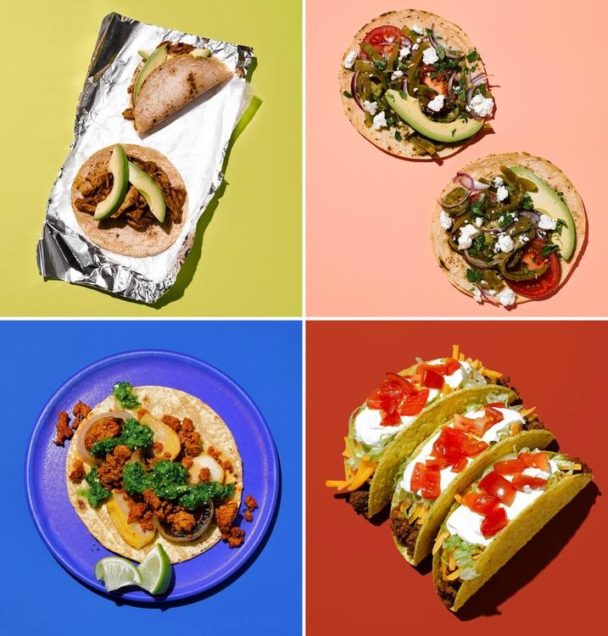
Sure there are some people that use the authenticity label to preserve their cultural traditions. It becomes a problem when people try to limit who can prepare and eat certain things in different places. Food is constantly changing – cultural transformations influence the way we prepare our meals all the time. Once upon a time, we were all eating the same things. Globalization, environmental changes, and technological developments have helped us shape our foodways into what they are today. Take any dish far enough back in time and you can start to see claims to “authenticity” break down. Sonia Ryang did this with one of Korea’s favorite foods, kimchi. Chilis weren’t native to Korea but are found in the national staple. Does the presence of chilis exclude kimchi from being considered an authentic Korean dish?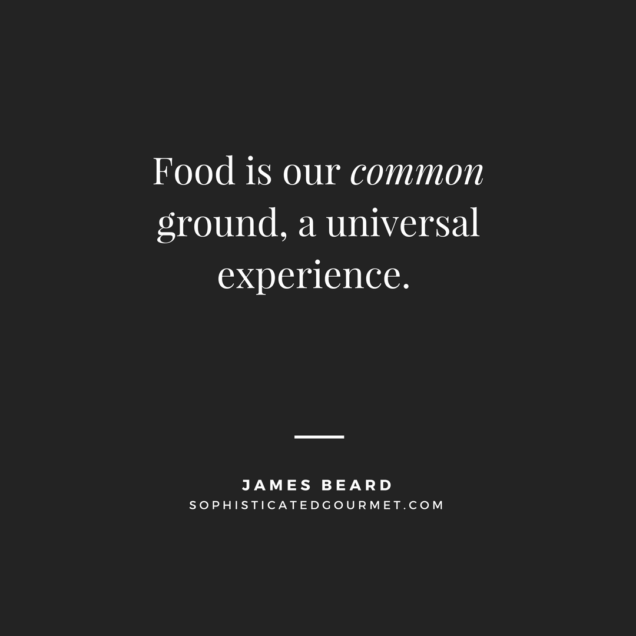
Whether it’s limiting foods to their national borders or preventing people from making foods outside of their own heritage, our obsessive search for authenticity is having a negative effect on society. It is discrimination under a veil of nationalism. It discourages creativity and keeps people from enjoying foods just because they taste good. Why can’t I enjoy sushi made by a Mexican man in New York? If it tastes good and he isn’t trying to claim that he invented sushi, who cares? We should be embracing the fact that the globalization of food cultures has the opportunity to bring about cross-cultural awareness and acceptance. Food has the power to transport our minds to other parts of the world; we should let it.
Works Cited
Ryang, Sonia. 2015. Eating Korean in America: Gastronomic Ethnography of Authenticity. Honolulu: University of Hawai'i Press.
The Power of Food in Supernatural Storytelling
Students in Dr. Karen Metheny’s Summer Term course, Anthropology of Food (MET ML 641) are contributing guest posts this month. Today’s post is from Sarah Critchley.
This summer, our Anthropology of Food class has covered seemingly every conceivable way to study how food reflects a culture, but the article that stood out to me was about the supernatural. Alison Krogel’s 2009 article, “Dangerous Repasts: Food and the Supernatural in the Quechua Oral Tradition” shows the effect that food can communicate without even physically eating it. Indeed, the amount of food consumed by the Quechua people covered in this article was negligible, but the characters in the stories they told prepare feasts that kill those who reject them, cast spells against their husbands in a potato dish, and even the characters themselves can become the meal if they are out too late.
Krogel includes a frequently-told story of a girl named Isicha Puytu who leaves her family behind after being tempted by a wealthy landowner. The girl’s family members try one by one to convince her to come home by bringing her gifts of food. After the brother and the father have gone, the mother outdoes herself by making an expensive dish, which the daughter again rudely refuses. The mother curses her, and the girl dies. Krogel notes that parents like to tell this story as a “tool for both entertaining and warning brazen children” (2009, 111). Other tales in the article have specific morals that food serves to heighten: don’t trust a witch even if she is your mother, don’t be mean to your wife, and watch out for travelers that refuse to eat your food - they might be evil spirits who want to eat your baby instead!
Thinking of food and the supernatural in Quechua tradition made me wonder how one could apply the same analysis to other folklore. As Krogel writes, “studying the techniques employed by narrators who weave foodways descriptions into their stories provides Food Studies scholars with a lens through which we might better come to understand a culture’s aesthetic preferences and complex socio-cultural practices and belief systems” (2009, 123-124). The story of Hansel and Gretel came to mind as I was thinking of how food can be a catalyst to teach a moral important to a society. Hansel and Gretel are captivated by the witch’s delicious house, only to find it full of danger within. The tale serves to warn that appearances can belie reality and harkens back to the Quechua’s message to warn “brazen children” with the story of Isicha Puytu. Perhaps more significant, the reason the siblings were in the forest alone was because their mother (or step-mother, according to some versions) locked them out of the house because there wasn’t enough food. When they return, she has died. Her death suggests that deliberately starving one’s own children or family members deserves the ultimate punishment. Though we have less of an oral tradition today in the United States than the Quechua in the Peruvian Andes, comparisons can be made to the role of food in folklore and fairy tales that are meant to be a tool to teach cultural values.
Works cited
Grimm, Jacob and Wilhelm. 2018. “Hansel and Gretel.” Date of access, June 25, 2018. https://www.pitt.edu/~dash/grimm015.html
Krogel, Alison. 2009. “Dangerous Repasts: Food and the Supernatural in the Quechua Oral Tradition.” Food and Foodways 17(2): 104-132.
